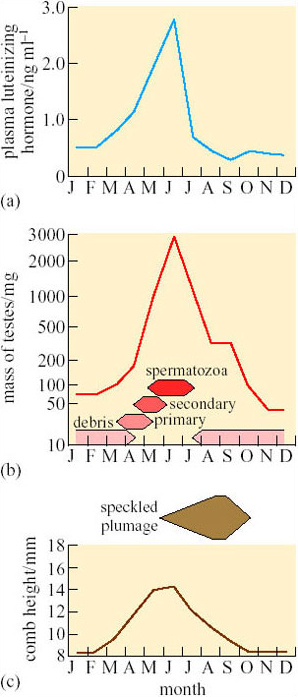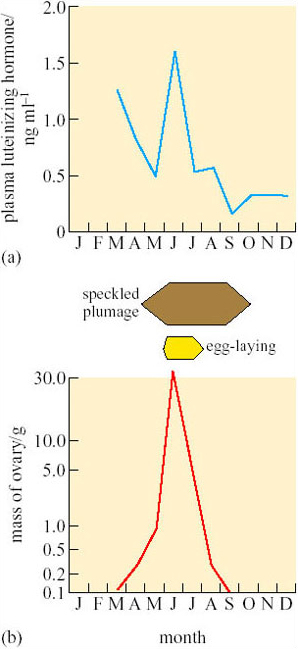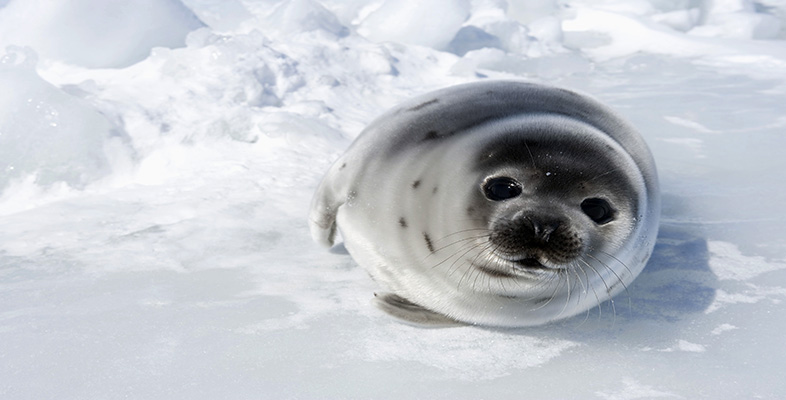2.3 Environmental regulation of breeding
As pointed out in Section 1.1, primary plant productivity occurs for only a few months in the summer, so the reproductive physiology of most arctic animals, particularly herbivorous species, is tightly synchronized with the seasons. On Svalbard (Figure 2b), more than 90% of the reindeer fawns are born in the first week of June. The mothers of those born too soon or too late are often unable to find enough food to support lactation and the fawn fails to thrive. As shown on Figure 1, the onset of continuous daylight and that of the conditions that support plant growth are several months out of phase. This situation poses little problem for reindeer, because the duration of pregnancy is almost constant and they mate only during a brief rutting period in September, when the daylength is changing rapidly. But this environmental cue alone would not be an accurate control on the timing of breeding of resident herbivorous birds such as ptarmigan that breed in mid-summer.
The physiological mechanisms that control the timing of several aspects of mating and breeding in the Svalbard ptarmigan (Lagopus mutus hyperboreus) have been investigated in detail (Stokkan et al., 1986). Their plumage is almost pure white in winter but speckled brown feathers appear in summer and the adult males have a red fleshy ‘comb’ over each eye. Figure 8 shows the seasonal changes in these secondary sexual characters, the maturation of the gonads, and the concentration of luteinizing hormone (LH) in blood plasma in ptarmigan shot on Svalbard. LH levels (Figure 8a) are low from August until February, when the Sun reappears (see Figure 1). The blood plasma LH levels and body mass (see Figure 6) start to increase slowly, and in March first primary, then secondary, spermatocytes appear in the testes (Figure 8b) and the combs begin to grow (Figure 8c). However, there are no mature spermatozoa until the end of May, so the gonads mature much more slowly than in most other seasonally breeding birds. Pigmented feathers also do not appear until June, just before the snow melts (Figure 8c).

SAQ 5
Are there any advantages in delaying the development of pigmented feathers?
Answer
Speckled plumage is probably much more conspicuous to potential predators (i.e. arctic foxes) against a background of snow than pure white feathers, so it would be advantageous not to produce the breeding plumage until it is essential for courtship and mating.
Throughout the year, LH levels are lower in female (Figure 9a) than in male (Figure 8a) ptarmigan, but, as in males, there is a sharp peak in June that coincides with maximum mass of the ovary and the period during which eggs are laid (Figure 9b). However, LH is also fairly high in March (Figure 9a), several months before the gonads become active. Some other factor, perhaps non-photoperiodic inhibitory input from the environment (e.g. cold weather), must be delaying the maturation of the ovary.

